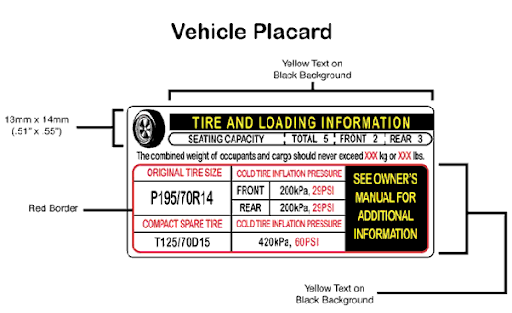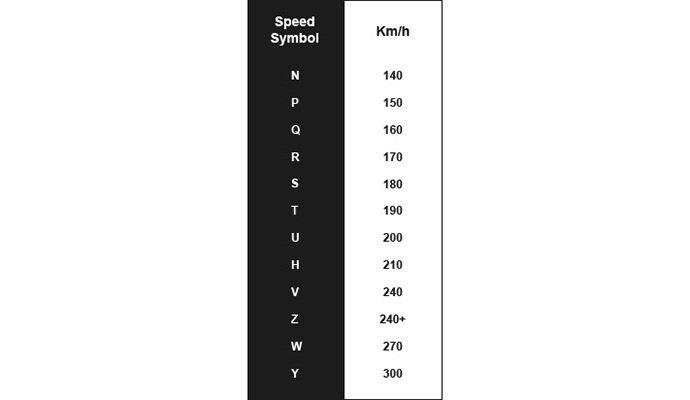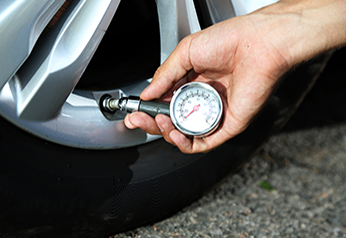
April 08, 2022
Your Tyre Speed Rating Explained
Ever wondered how fast you can drive with the tyres you have?
Well, you're not alone.
Many decide on how fast to drive by using a combination of the prescribed legal speed limit and how fast they can floor it before fear sets in and they slow down.
Most people don't realize that every tyre has a prescribed speed rating which states the maximum speed of that particular tyre.
We'll break down your tyre's speed index and how it can help keep you from driving too fast and safe from potential harm.
What Is Tyre Speed Rating?
Tyre Speed is the fastest speed your tyre can go as designed by its manufacturers.
It is the maximum speed your tyre can travel while carrying the heaviest weight or load it can bear.
Tyre Speed Reminders:
-
Only drive tyres with the exact same speed ratings.
Never drive tyres with different speed ratings. It will cause steering and handling issues and you may even lose grip. -
Follow the legal speed limit always.
Even if your tyre speed capability is higher than the speed limit, don't ignore the law by driving at very high speeds. Be a responsible driver especially if the roads and weather are bad,
How Is Tyre Speed Rating determined?
Tyre speed ratings are set by the tyre manufacturer since they both design and produce each tyre. The following qualities are taken into consideration when setting speed ratings:
1. Vehicle weight and classification
2. Compliance with various industry guides and standards
3. Lab test results for simulated speeds, loads, and driving conditions.
The tyre will only receive its speed rating if it can reliably sustain a particular speed.
TYRE ADVICE:
If the information on your tyre sidewall does not match what is on your vehicle manual or tyre placard, always follow your manual and placard. This is just in case your current tyres are replacement tyres and NOT your vehicle's original tyres.
Simulated Testing vs. Real World Driving
Drivers should note that tyre speed rating is based on ideal, almost perfect driving conditions.
The ratings are not valid for damaged, repaired, modified, and over and under-inflated tyres.
Since tyre speed ratings are determined via lab tests, we must remember that labs still do not equal real-life experience.
This means that the tyre speed rating will show the maximum speed your tyre can handle if it is running properly with the correct inflation pressure, that the vehicle is in good working condition and that the weather is not too hot or too cold.
The safety implication here is immense.
It is possible that your tyre's actual speed capacity - or how fast it can go in real life, not so perfect driving conditions, maybe a lot less slow than its speed rating. This is because the tyre - in real-life usage will be exposed or affected by other factors that might not be optimum for the tyre's performance. These factors include over-inflated tyres, misaligned wheels, poor road conditions as well as uncooperative weather.
Where do I find the Tyre Speed Rating?
1. Tyre Code
You can find your speed symbol on the sidewall of your tyre as part of the tyre ratings. It is easy to find the speed rating because it is the last item in the row of numbers that represent the tyre code. It is often paired with the load index number which is a measure of your tyre's load capacity.

2. Tyre Placard
The speed rating can also be found on your vehicle's tyre placard. This placard can usually be found on the driver's door, the glove compartment or under your car's bonnet. It serves as a tyre guide or tyre rating chart of sorts because you can also find your tyre's load rating and tyre pressure requirements on the vehicle placard.

3. Owner's manual
Your vehicle's manual will have all the important speed rating information for your tyres. If you've somehow lost your manual, you can purchase a new one from the car company themselves or check online, after making sure that the information is correct.
Your Tyre Speed Rating Chart
Tire Speed ratings use letters that correspond to a particular speed which is presented using a tyre speed rating chart. The letter A represents the lowest speed, while all the other succeeding letters until it ends in Y represent higher speed ratings. The tyre speed rating chart in Australia is the same one used by the rest of the world.

Seasonal tyres and speed rating
The different seasons also affect your tyre's speed ratings.
In the summer, you should NEVER use a tyre with a lower speed rating - and a higher load rating - than what was recommended by the vehicle manufacturer. This is considered illegal in some parts of the world as well.
For Winter weather, it is allowed to use a winter tyre with a lower than recommended speed rating but not lower than the Q rating - which equals about 160km/h as stated by EU legislation (Directive 92/23/EEC).
What happens if I use the wrong speed rating?
1. You can lose control of your vehicle because your tyre may no longer be as responsive to your steering.
2. A blowout can occur which can have potentially fatal consequences, not just for you but for others on the road.
3. In case of accidents, your insurance company may refuse to cover your vehicle if it was using tyres not recommended by the car manufacturer.
4. You can go to jail because fitting tyres with lower than recommended tyre speed ratings in Australia AND driving around with them is illegal and punishable by law.
If you need more information about your tyre load and speed rating, let us know! Reach out via our contact page or social media accounts and members of #TeamTyroola will assist you.
Tyroola has a wide selection of tyres with all speed ratings available to match what your car needs.
You can start shopping for the perfect set of tyres here.



